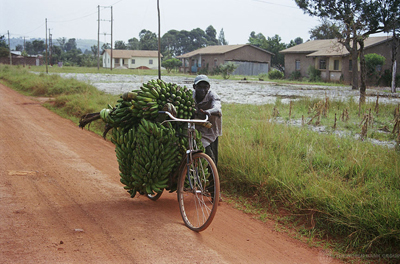Comprehensive Climate Change Planning in Tanzania

Summary
Tanzania is highly vulnerable to climate shocks, and droughts, floods, and tropical storms are likely to become more intense and unpredictable as the earth warms. Current climate variability already inflicts significant economic hardship on Tanzania, which is largely dependent on agriculture. A devastating drought in 2005 and 2006 affected millions of people, particularly those who relied on subsistence crops for food and income, and resulted in high economic costs. Tanzania is developing a National Climate Change Strategy to identify climate risks and provide a strategic framework for mitigating those risks. Using South-South Facility funding, the World Bank arranged for high-ranking government officials and civil organization representatives to visit Namibia for a week of workshops and study tours. The Tanzanian delegates met with representatives from Mexico, South Africa, Namibia, and Zambia, who are recognized as global leaders in developing comprehensive, strategic action plans for addressing climate change.
“The Tanzanian representation here strongly acknowledges the need to revamp the climate change process in Tanzania,” said Dr. Bonaventure Baya, Director of the National Environmental Management Council. “We want to ensure there is new momentum in driving the process in Tanzania.”
The knowledge exchange improved consensus on how climate change challenges can be mainstreamed into national development planning. Some of the lessons were integrated into the finalization of the National Climate Change Strategy, which has involved stakeholders in the government, civil society organizations, and international development partners. Once finalized, the strategy will call on sectors to develop climate change action plans, promote the development of an institutional framework, and set the stage for Tanzania to leverage climate finance resources to bridge the gap between climate risks to the economy and the cost of adaptation measures.
“We will need to look into the whole climate change management in Tanzania,” Dr. Baya said. “Stakeholder participation will bring in new ideas, and include non-state actors to reshape the whole procedure.”
Beneficiaries / Participants
Tanzania has become increasingly aware of its high vulnerability to climate change. In 2005, a devastating drought affected millions of people, particularly those relying on subsistence crops for food and income, and resulted in economic losses of at least 1 percent of GDP. Tanzania’s vulnerability to climate shocks is expected to increase with the warming of the earth and as floods, tropical storms, and droughts become more intense and unpredictable. In a letter to the World Bank in 2011, Tanzania’s Ministry of Environment sought support to develop a comprehensive national climate change strategy, which would outline priority adaptation and mitigation measures as well as clear institutional responsibilities. The strategy should enable Tanzania to invest limited development funds to promote climate resilience. A recent study on the economics of climate change in Tanzania funded by the United Kingdom’s Department for International Development (DFID) reported that future climate change impacts could result in an annual loss of over 2 percent of GDP by 2030. The same study also projected that Tanzania would need US$500 million per year to adapt to current extreme weather events now—future adaptation could cost an additional US$150 million annually.
Tanzania specifically requested the Bank to connect it with Mexico, a recognized global leader in developing comprehensive, strategic action plans for addressing climate change in a holistic manner. Mexico has developed a National Climate Change Strategy and a Special Climate Change Program, which describes emissions targets and priority adaptation actions for each sector. The country has also prepared climate change plans at the state level; these plans include detailed actions together with financing sources. Mexico’s cross-cutting program aims to reduce 50 percent of greenhouse gas emissions by 2050. With funding from the South-South Experience Exchange Facility, the World Bank underwrote Tanzanian government officials and other stakeholders’ travel to Windhoek, Namibia for a Learning Week in Global Best Practices in Comprehensive Climate Change Planning. The Learning Week was intended to be a knowledge exchange between the Tanzanian delegation and peers from Mexico, South Africa, Zambia, and Namibia. The aim was for Tanzanian decision-makers and advocates to learn from successful approaches to climate change planning in different economic and regional contexts and apply these lessons to their own context.
Moving forward
Given that a large proportion of Tanzania’s GDP is associated with climate sensitive activities, particularly agriculture, the Tanzania Country Assistance Strategy for FY12–FY15 emphasizes Tanzania’s vulnerability to climate change and calls for Economic and Sector Work (ESW) on the issue. This ESW is under preparation and will focus on support to the Government of Tanzania to implement the priorities of the National Climate Change Strategy. The Bank is closely coordinating with DFID and the United Nations Development Programme (UNDP) on this support. With the Government of Tanzania committed to comprehensive climate change planning, sustained engagement by the Bank on capacity building and further mainstreaming of climate change in Bank operations in Tanzania should also lead to improved outcomes.

 China
China Colombia
Colombia Denmark
Denmark India
India Indonesia
Indonesia Mexico
Mexico Russian Federation
Russian Federation Spain
Spain United Kingdom
United Kingdom